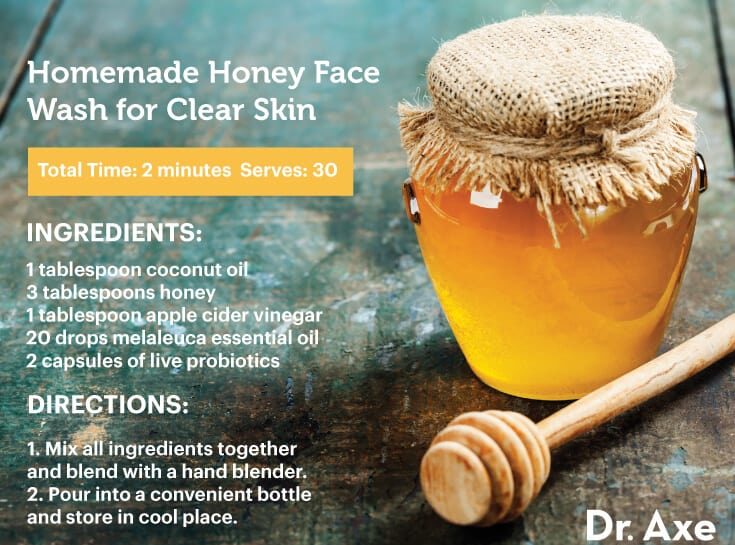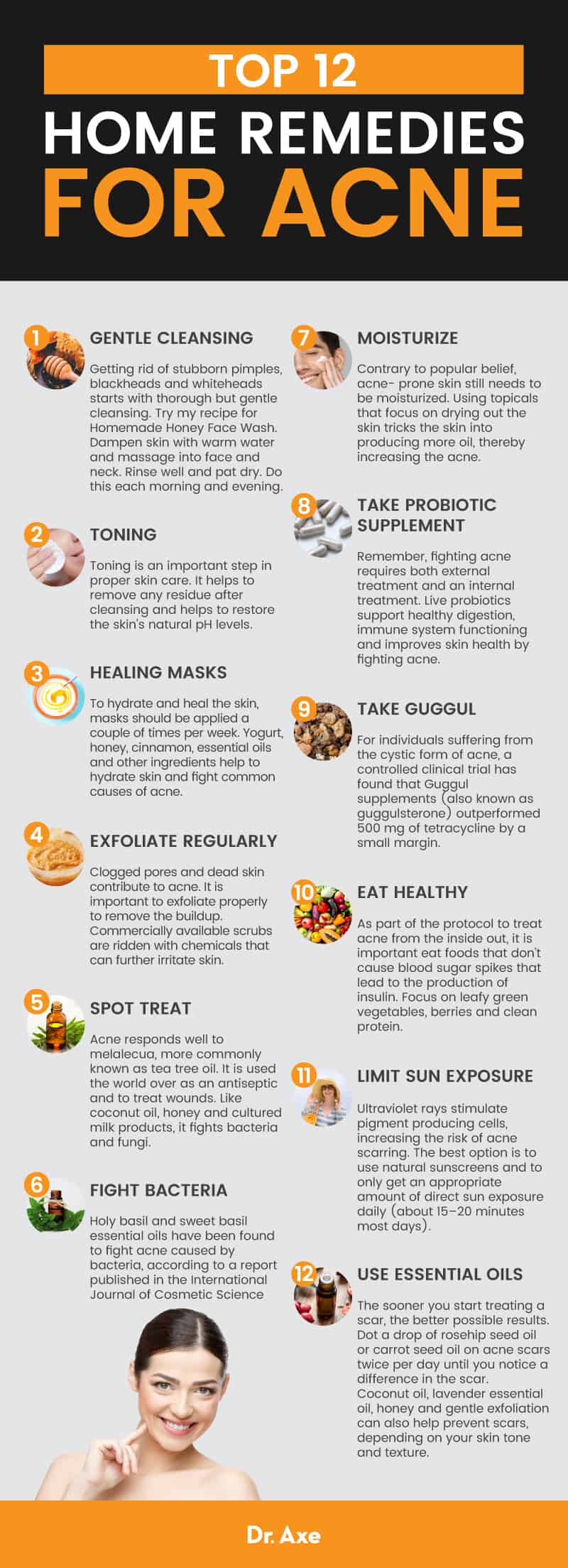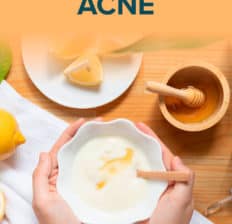This Dr. Axe content is medically reviewed or fact checked to ensure factually accurate information.
With strict editorial sourcing guidelines, we only link to academic research institutions, reputable media sites and, when research is available, medically peer-reviewed studies. Note that the numbers in parentheses (1, 2, etc.) are clickable links to these studies.
The information in our articles is NOT intended to replace a one-on-one relationship with a qualified health care professional and is not intended as medical advice.
This article is based on scientific evidence, written by experts and fact checked by our trained editorial staff. Note that the numbers in parentheses (1, 2, etc.) are clickable links to medically peer-reviewed studies.
Our team includes licensed nutritionists and dietitians, certified health education specialists, as well as certified strength and conditioning specialists, personal trainers and corrective exercise specialists. Our team aims to be not only thorough with its research, but also objective and unbiased.
The information in our articles is NOT intended to replace a one-on-one relationship with a qualified health care professional and is not intended as medical advice.
Top 12 Home Remedies for Acne
June 2, 2023

Our skin is a reflection of our overall health, which is why glowing, beautiful skin often results from proper care, hydration and eating a nutrient-dense diet. On the other hand, skin ridden with whiteheads, blackheads, nodular acne and other types of pimples can indicate oxidative damage, poor nutrition and hormonal imbalances — making it all the more important to find home remedies for acne.
A healthy diet, applying essential oils, proper gentle cleansing and balancing hormones are all home remedies for acne so you can restore your skin’s health, reduce unsightly pimples or other types of irritation, and prevent acne scars.
1. Cleanse Gently
Getting rid of stubborn pimples, blackheads and whiteheads starts with thorough but gentle cleansing of the skin. Try my recipe for Homemade Honey Face Wash to cleanse skin without causing irritation.
It features apple cider vinegar, honey, coconut oil, probiotics and essential oils (like tea tree oil). The honey soothes the skin, the coconut oil helps fight bacteria and fungus, and the tea tree oil helps invigorate the skin.
Dampen skin with warm water, and massage into face and neck. Rinse well, and pat dry. Do this each morning and evening and, if needed, after workouts.
Refrain from cleansing more often, as this can irritate the skin and cause an overproduction of oil.
If you find that acne appears around your hairline, commercial hair products may be to blame. Shampoo, conditioner, hair spray, gels and mousses contain acne-causing ingredients, including petroleum, parabens, silicone, sulfates, panthenol and other chemicals.
Try my Homemade Honey Citrus Shampoo that is void of harmful chemicals and leaves hair soft and manageable. Follow with a touch of coconut oil or my Homemade Conditioner made from apple cider vinegar and essential oils.
Like hair products, makeup and skin care products contain ingredients that can cause acne. Common offenders include:
- lanolin
- mineral oil
- aluminum
- retinyl acetate
- alcohol
- oxybenzone
- triclosan
- parabens
- polyethylene
- BHA and BHT
- formaldehyde-based preservatives
Read ingredient labels to avoid putting these types of chemicals on your sensitive skin.

2. Tone to Restore pH Balance
Toning is an important step in proper skin care. It helps remove any residue after cleansing and helps restore the skin’s natural pH levels.
You can use pure apple cider vinegar (with the mother culture) as your evening and morning toner. Apple cider vinegar is packed with potassium, magnesium, acetic acid and various enzymes that kill bacteria on the skin.
Chronic acne can be the result of bacteria and fungi that continue to spread and grow on the surface of the skin. With a cotton ball, smooth ACV over skin, paying particular attention to active breakouts and acne-prone areas.
3. Use Healing Masks
To hydrate and heal your skin, try applying masks a couple of times per week. Yogurt, honey, cinnamon, essential oils and other ingredients can be used to create soothing masks that help hydrate skin and fight common causes of acne.
Here are two mask recipes that are easy-to-make home remedies for acne:
- Yogurt and Honey Mask: Mix one tablespoon of raw honey with one tablespoon of yogurt. Apply to face, paying particular attention to hairline, jawline and other acne-prone areas. Relax for 10 minutes, and gently wipe off with a damp cloth.
- Cinnamon and Honey Mask: Mix two tablespoons of raw honey, one teaspoon of coconut oil and 1/2 teaspoon of cinnamon. Smooth over face. Keep away from eyes, as the cinnamon can be an irritant. Relax for five to 10 minutes, and gently remove with damp cloth. Honey and cinnamon used together helps fight acne because of the anti-inflammatory, antioxidant and antibacterial properties.
Add a couple of drops of tea tree oil to either of the masks above during an active acne breakout. Tea tree oil is considered one of the best home remedies for acne.
Also consider using kaolin clay, which is suited for nearly all skin types and is considered one of the most gentle clays available. In fact, one assessment showed that as part of a clay mask, it helped control oiliness without excessively drying the skin.
4. Exfoliate Regularly (but Gently)
Clogged pores and dead skin both contribute to acne. It’s important to exfoliate properly to remove buildup — however, keep in mind that commercially available scrubs are ridden with chemicals that can further irritate skin.
DIY scrubs to fight acne and keep skin fresh are easy to make and economical.
First, you need something that is gritty. Sea salt, brown sugar and ground oatmeal are good choices.
In addition, you need a base. Coconut oil, kefir and honey are all good choices. These bases help fight bacteria, fungi and candida overgrowth on the skin while the textured ingredients help unplug pores and remove dead skin.
To make your own exfoliate, mix two tablespoons of the dry ingredient of choice with one to two tablespoons of the base of choice. Rub into skin in a circular motion.
Start at the forehead, and work your way down, paying particular attention to problem areas. Remove with a damp cloth, and rinse well.
5. Spot Treat with Tea Tree Oil
Acne responds well to melaleuca, more commonly known as tea tree oil. It’s used the world over as an antiseptic and to treat wounds.
Like coconut oil, honey and cultured milk products, it fights bacteria and fungi.
According to medical research, tea tree oil gels containing 5 percent tea tree oil may be as effective as medications containing 5 percent benzoyl peroxide. Researchers do indicate that tea tree oil may work more slowly for some individuals, so try to be patient.
To make a simple home remedy for acne using tea tree oil, mix four to eight drops of tea tree oil and one teaspoon of coconut oil or jojoba oil. Dap lightly onto the problem areas.
Slight tingling is normal, but if the application causes lots of burning, discontinue use. Always use a carrier oil, as tea tree oil can be too harsh when applied directly to skin.
There are also several other ingredients you can use on skin to reduce inflammation, such as chamomile oil and aloe vera. These can especially be beneficial if your skin is irritated due to using products containing salicylic acid, benzoyl peroxide or both.
6. Fight Bacteria With Holy Basil
Holy basil and sweet basil essential oils have been found to fight acne caused by bacteria, according to a report published in the International Journal of Cosmetic Sciences.
In this study, sweet basil oil slightly outperformed holy basil oil in topical applications. Holy basil oil tea, or tulsi tea, supports healthy blood sugar and hormone levels.
As these two conditions are linked with acne, consuming herbal tea daily helps balance hormones naturally, fighting acne from the inside out, making this one of the best crossover home remedies for acne.
Additionally, holy basil tea can be applied topically to the skin as a toner, serving as another of the many home remedies for acne. Either sweet basil or holy basil essential oils can also be added to the masks, cleansers or exfoliating recipes mentioned above.

7. Moisturize
Contrary to popular belief, acne-prone skin still needs to be moisturized. Using topicals that focus on drying out the skin tricks the skin into producing even more oil, thereby further contributing to clogged pores and more acne.
What is the best product for acne if you have dry skin? Coconut oil is one of the most versatile and healthy oils on Earth. While it can be too heavy for some skin, coconut oil is generally an excellent moisturizer.
A study published in Biomaterials found that lauric acid found in coconut oil demonstrates the strongest bacterial activity against acne caused by bacteria. There is an increasing demand for coconut oil beauty products because the lauric acid, antioxidants and medium-chain fatty acids hydrate and restore skin and hair.
To make a homemade daily skin moisturizer, warm ¼ teaspoon of coconut oil in the palms of your hands. Smooth over your cleaned face and neck.
Allow to soak into the skin for five minutes. Gently wipe off excess oil with a dry cloth.
The amount that has been absorbed is all your skin needs, but any excess may cause a breakout.
8. Avoid Too Much Sun Exposure
For acne-prone skin during breakouts, it’s important to protect against sun exposure. Ultraviolet rays stimulate pigment-producing cells, increasing the risk of acne scarring.
The best option is to use natural sunscreens and only get an appropriate amount of direct sun exposure daily (about 15–20 minutes most days).
Commercial sunscreens are packed with harmful chemicals that can irritate sensitive skin and acne-prone skin. Research shows that coconut oil has an SPF value of 8, as does olive oil.
To use as sun protection, apply a moderate amount to exposed skin every couple of hours, and try to avoid spending too much time in direct sunlight during “peak” hours, which are from about 10 a.m. to 3 p.m. each day.
9. Take a Probiotic Supplement
Remember, fighting acne requires both external treatment and an internal treatment. Live probiotics support healthy digestion and immune system functioning, plus improve skin health by fighting acne.
According to a study published in Dermatology Online Journal, researchers indicate that probiotic foods and supplements are promising and safe home remedies for acne. The study indicates that larger trials are still needed, but evidence thus far is promising for using probiotics to improve gut health and fight acne.
10. Take Guggul
For individuals suffering from the cystic form of acne, a controlled clinical trial found that guggul supplements (also known as guggulsterone) outperformed 500 milligrams of tetracycline by a small margin.
In the study, 25 milligrams of guggulsterone taken twice daily for three months resulted in the reduction of acne, but more importantly, 50 percent fewer participants had acne relapses. Researchers noted that patients with oily skin responded remarkably better to guggul than others in the study.
Research indicates that the supplement form of vitex might help clear premenstrual acne, as well, possibly by regulating hormonal influences.
11. Eat a Healthy, Low-Glycemic Index Diet
There’s evidence that eating a low glycemic diet, meaning one that doesn’t include lots of processed grains/flour products and added sugar, is one the best home remedies for acne because it can help prevent it. Glycemic index measures how quickly foods raise blood sugar.
Processed and refined foods, like those common in the Western diet, are high-glycemic, while meats and whole plant foods are low on the glycemic scale.
Glycemic load is a measure of glycemic index times carbohydrates minus fiber. Most of the time, refined and processed food have a high glycemic index and high glycemic load, while certain vegetables have a higher glycemic index but very low glycemic load on the body.
In 2007, a study published in the American Journal of Clinical Nutrition found that glycemic load can greatly affect acne. Forty-three males with acne, aged 15 to 25, were separated into two groups.
For 12 weeks, one group ate a diet that was 25 percent protein and 45 percent low-glycemic carbohydrates. The other group ate carbs without any control of glycemic index, resulting in a higher glycemic diet.
At the end of the study, the acne decreased in the low-glycemic group by almost twice the rate of the high-glycemic group!
As part of the protocol to treat acne from the inside out, it’s important eat foods that don’t cause blood sugar spikes or increased inflammation. Here are tips for following a acne-free diet:
- Focus on eating lots of leafy green vegetables, berries and clean protein.
- Increase consumption of wild fish, grass-fed meat and cage-free chickens.
- Healthy fats are essential to good skin health and treating acne breakouts at home, so include foods rich in omega-3s, like wild-caught salmon.
- Add zinc-rich foods, such as kefir, yogurt, lamb, pumpkin seeds and chicken. According to a study published in BioMed Research International, there is a correlation between low zinc levels and the severity of acne.
- Eat more high-fiber foods since fiber found in vegetables, fruits, nuts and seeds supports cleansing the colon and growth of good bacteria in the gut.
- Add vitamin A-rich foods to your diet, including spinach, carrots and beef liver.
Foods to avoid for acne-free skin include hydrogenated oils, gluten, wheat, sugar and conventional cow’s milk dairy products.
- If you must have your dairy milk, consume goat’s milk or raw milk. Researchers have found that conventional milk products can contribute to acne. In addition to conventional dairy, it’s important to exclude known allergens or foods you have a sensitivity to — common food allergens include gluten, tree nuts, soy, peanuts and shellfish.
- Sugar and carbohydrate-rich foods — Consuming excess amounts of sugar and grain products can feed yeast and candida in the body, increasing acne.
- Gluten and wheat — These foods cause inflammation of the gut, which also affects the skin.
- Chocolate — Chocolate is high in compounds that can trigger acne. Eliminate chocolate completely if possibl,e but if you consume it, make sure it’s pure dark chocolate.
- Fried and fast foods — These foods contain a number of ingredients that cause inflammation, including hydrogenated oils, sodium, chemicals, flavorings and sugar.
- Hydrogenated oils — Causes oily skin and are one of the main causes of acne. Hydrogenated oils can be found in foods like pizza and in packaged foods that contain soybean oil, corn oil, canola oil and vegetable oil.
12. Use Essential Oils to Reduce Acne Scars
If you’ve ever suffered from acne in the past, then you’re probably wondering how to get rid of acne scars that can remain for months or even years. Treating acne scars takes patience and perseverance.
The sooner you start treating a scar, the better possible results. The vast majority of individuals who get acne experience some degree of scarring.
The most important thing you can do to prevent scarring? During a breakout, never pick or pop pimples, whiteheads or blackheads!
For six to 12 months after an acne breakout, stay out of the sun as much as possible to avoid making dark spots and scars worse. When you are in the sun, use an all-natural sunscreen to protect skin.
If scars do develop, dot a drop of rosehip seed oil or carrot seed oil on the scars twice per day until you notice a difference in the scar.
Coconut oil, lavender essential oil, honey and gentle exfoliation can also help prevent scars, depending on your skin tone and texture. To naturally help treat acne scars, you can make a paste of raw honey, lavender essential oil, tea tree oil and frankincense oil. Check out my recipe for a homemade Acne Scar Removal Face Mask.


